

3237 Santa Rosa Avenue
Santa Rosa, California
Phone: (707) 544-2779
Email: archfoam@sbcglobal.net
We have a selection of pre-designed shapes available for easy ordering, or you can design your own.
Architectural Foam Products uses a CNC Machine to custom design crown molding, cornices, corbels, columns, arches, quoins, headboards, keystones, window sills, trim and other decorative detailing.
During
the manufacturing process, our machine cuts the desired contour into
the foam, yielding a highly uniform product, typically manufactured
in 8 foot lengths. Longer or shorter lengths can be made. Once the
foam has been shaped and precut to required sizes, a reinforcing
fiberglass mesh is adhered over the exposed area. A thin brown-coat
is spread evenly over the surface, providing a protective and durable
bond-coat ready for final texturing or painting after installation.
Seams
and joints between adjacent pre-basecoated foam pieces (such as crown
molding used in soffits) are spliced with additional fiberglass mesh
tape prior to application of the final finish coat. Because of their
light weight, foam shapes are readily installed by one or two
craftsmen who secure the shapes into place with a special bonding
agent.
Architectural
Foam Products can also provide cutting and mitering services, such as
prefabricated inside/outside corners and returns.
Architectural
Foam Products can help you design your own decorative shapes. Our
computer programmed design can duplicate any molding profile. Simply
fax us your molding or shape drawing and include the desired
dimensions. We will then program your shape profile and submit a
quote based on the quantity needed. Upon your approval and
confirmation of the final design, you are on your way to create the
appearance of expensive sculptured molding for your home or building.
Designing
your own shapes: If
you have access to a CAD program like AutoCAD, BobCAD, or other
software that can export DXF files, you can design your OWN shapes,
and send them directly to us. This can save you money on custom
shapes, as we then can go almost directly to cutting without having
to design the shape ourselves. Any
piece that is exposed to weather should have a drip angle on top
based on industry standards. (Be sure when defining a drip slope that
it meets building codes in your area, since the minimum slopes vary
by region .) Applying
Foam pieces to your architecture: Flat
stock: The
following pieces are available as standard flatstock materials,
netted and coated on 3 sides: 
 Simply
design the shape, to the scale you want it cut, as a 2-dimensional
closed spline. Due to the limitations of foam, make sure that all
parts of the shape are at least ½ inch thick...any thinner,
and the material will tend to burn through or sag at the thin spot.
If you need an UNCOATED piece of raw foam, you should make the piece
very slightly larger than you actually need to take the wire burnout
into account.
Simply
design the shape, to the scale you want it cut, as a 2-dimensional
closed spline. Due to the limitations of foam, make sure that all
parts of the shape are at least ½ inch thick...any thinner,
and the material will tend to burn through or sag at the thin spot.
If you need an UNCOATED piece of raw foam, you should make the piece
very slightly larger than you actually need to take the wire burnout
into account.

Once
you have designed your shape, just tell us what you need done with it
(For example, whether you need a 1-inch thick wall decoration or an 8
foot long rail):

For pieces
extending more than a foot from the wall surface without soffit
attachment or other support at the top surface of the piece, it is
recommended that a mounting rail, either of foam or some other
material, like pressure treated wood, be mechanically mounted to the
wall beneath the foam piece, with a notch cut in the foam to match
the rail, for additional support.
| 1” X 4” | 1½” X 4” | 2” X 4” | 1” X 6” | 1½” X 6” | 2” X 6” |
| 1” X 8” | 1½” X 8” | 2” X 8” | 1” X 10” | 2” X 10” | 2” X 12” |
Custom pieces:
Foam available with either fully rounded edges, or with bullnosed edges. These are non-standard, and are made to-order, and thus are not available same-day.

Be sure to specify whether you want rounded or bullnosed ends on BOTH or just one side of the stock, or rounded on one side and bullnosed on the other. The rounded surfaces will be assumed to be half the thickness of the material in radius, unless otherwise specified.
Foam can be ordered as rectangular strips, sheets, or blocks in whatever size you specify. Typical length is 96 inches for most pieces.
Molds and Templates:
|
| Foam shapes can be cut for break-apart molds for Concrete or other liquid-pour (Cold) substances (Hot substances could melt the foam.) A negative shape can also be cut as a template to smooth out plaster or other coatings on a shape for finishing. |
|
|
Some
examples of dentils. Dentils can be used in many different ways, and
are almost always custom-made. In
general, a Dentil consists of a shape with another smaller Bracket or
bandlike shape attached at intervals.
|
Corbels and Brackets:
| These are typically made from a Cornice-type shape, simply cut to a shorter length, and possibly designed with recesses or extrusions. |  |
|
|
There are 4 standard styles of column: Round, Straight-sided, Fluted, and Shaped. Bellied and tapered columns are also available. |
Column bases and capitals:
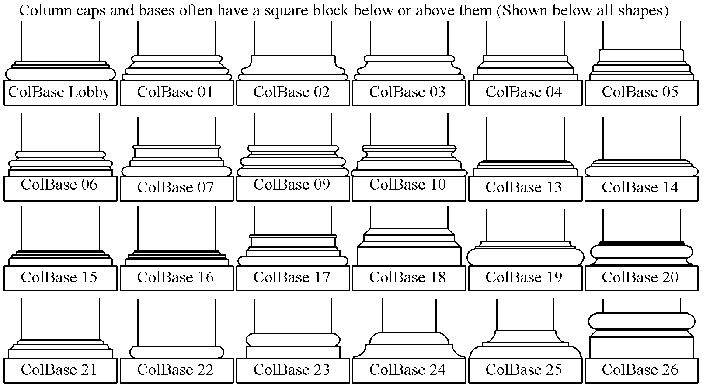
Quoins:
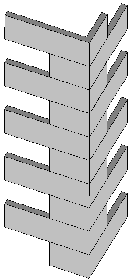

These
are usually L-shaped, as detail on a corner. When ordering Quoins,
please specify thickness, height and Width. Quoins usually are longer
in one direction, and alternate to the left and right going up the
corner.
Arches and curves:

|
Any
shape can be made into an arch. We need the overall height and width
of the inner curve of the arch when it is ordered.
If you need a piece to be curved, in addition to telling us what shape to use, you should indicate the inner and outer radii for the curves, and in what way the piece needs to be curved. | |
|
Quatrofoils
 |
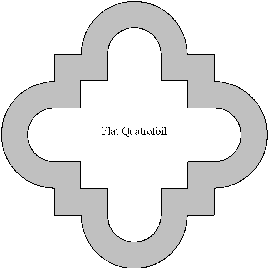 | So called because they are usually 4-sided, Quatrofoils are often used as decoration on a wall or around a window of unusual shape. |
|
Bullseyes
Bullseyes are used in similar places to Quatrofoils, but are round instead of having corners and angles. The one pictured here has flat keystones at 90 degree increments and a stepped shape. |

|
| Decorations: Many shapes don't fall into neat catagories. Here are some examples of some other shapes that are within our capability. For example, foam shapes can be used to fill large empty areas with accent pieces, or as a corner detail, or to cover unsightly cables and junction boxes with something decorative. More here. |
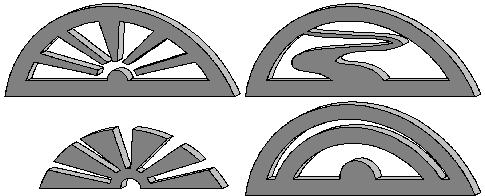 | 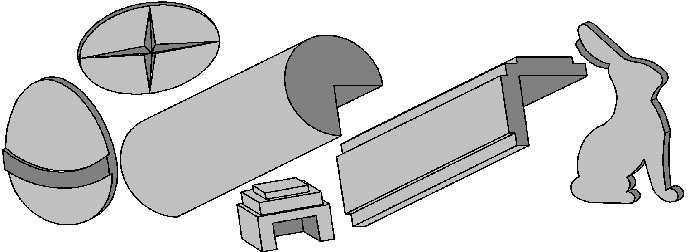 |
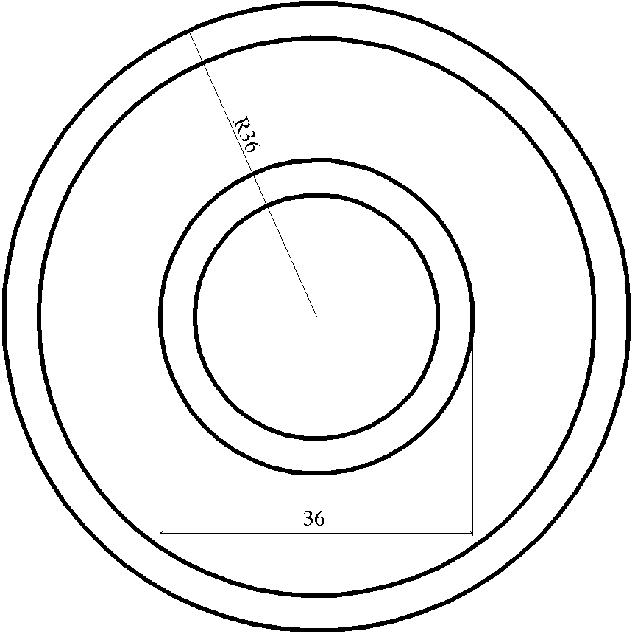 | As you can see here, a Radius/Diameter error can cause a significant difference in the resulting foam. |